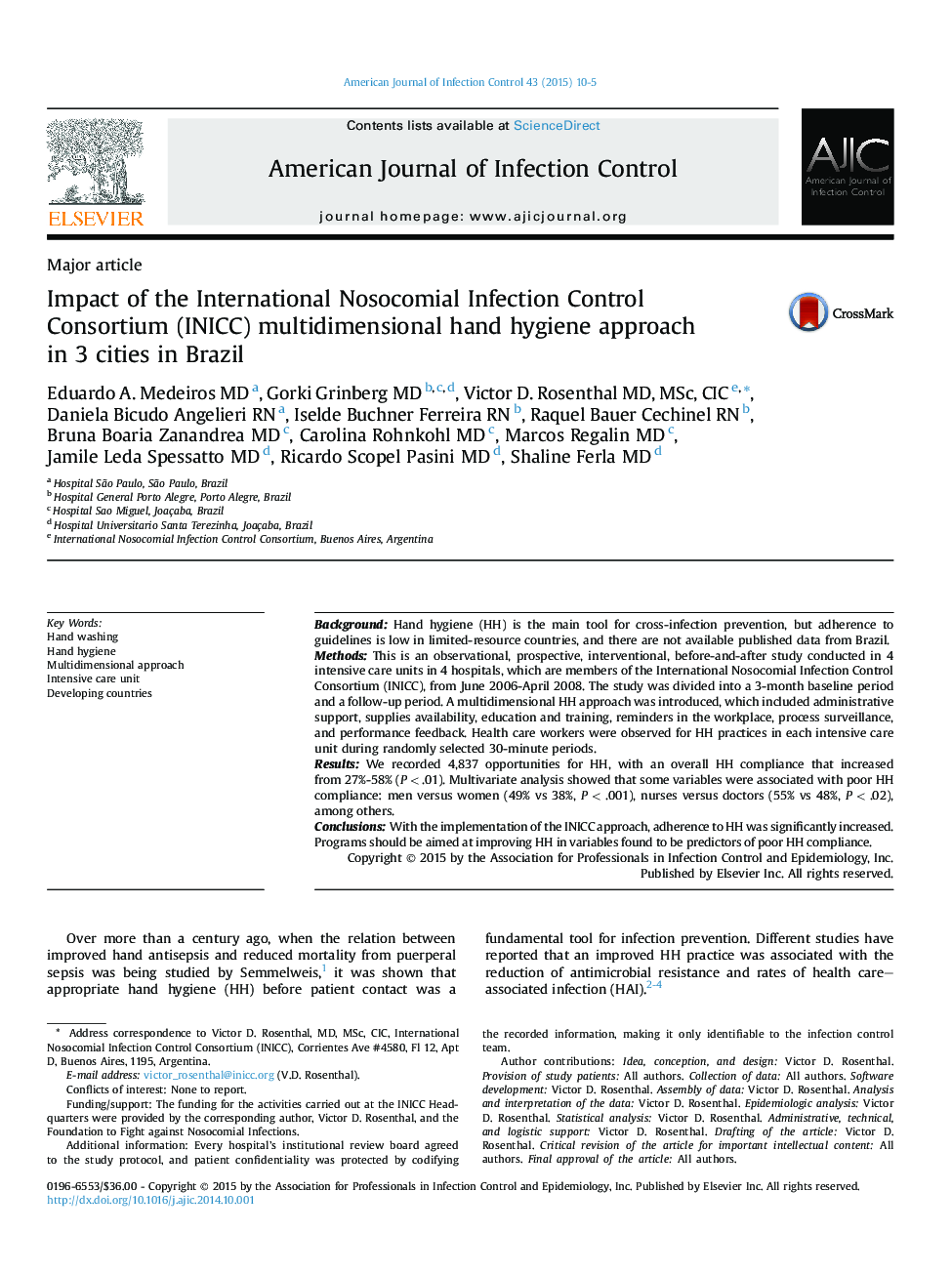| Article ID | Journal | Published Year | Pages | File Type |
|---|---|---|---|---|
| 2638061 | American Journal of Infection Control | 2015 | 6 Pages |
•A multidimensional approach to improve hand hygiene compliance was implemented in Brazil.•Overall hand hygiene compliance in intensive care units increased from 27% to 58%.•Adherence to hand hygiene was increased significantly with the International Nosocomial Infection Control Consortium multidimensional hand hygiene approach.
BackgroundHand hygiene (HH) is the main tool for cross-infection prevention, but adherence to guidelines is low in limited-resource countries, and there are not available published data from Brazil.MethodsThis is an observational, prospective, interventional, before-and-after study conducted in 4 intensive care units in 4 hospitals, which are members of the International Nosocomial Infection Control Consortium (INICC), from June 2006-April 2008. The study was divided into a 3-month baseline period and a follow-up period. A multidimensional HH approach was introduced, which included administrative support, supplies availability, education and training, reminders in the workplace, process surveillance, and performance feedback. Health care workers were observed for HH practices in each intensive care unit during randomly selected 30-minute periods.ResultsWe recorded 4,837 opportunities for HH, with an overall HH compliance that increased from 27%-58% (P < .01). Multivariate analysis showed that some variables were associated with poor HH compliance: men versus women (49% vs 38%, P < .001), nurses versus doctors (55% vs 48%, P < .02), among others.ConclusionsWith the implementation of the INICC approach, adherence to HH was significantly increased. Programs should be aimed at improving HH in variables found to be predictors of poor HH compliance.
